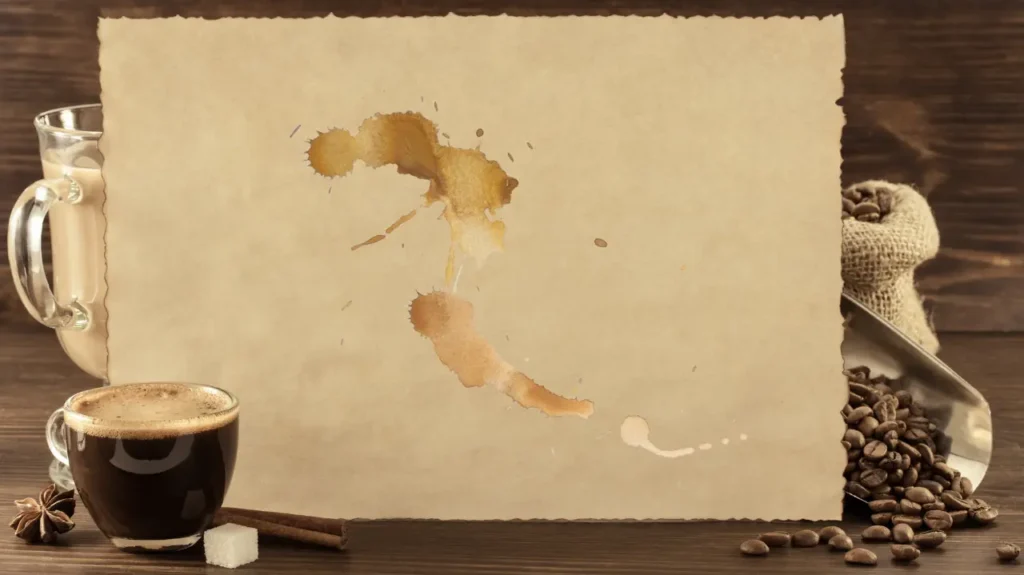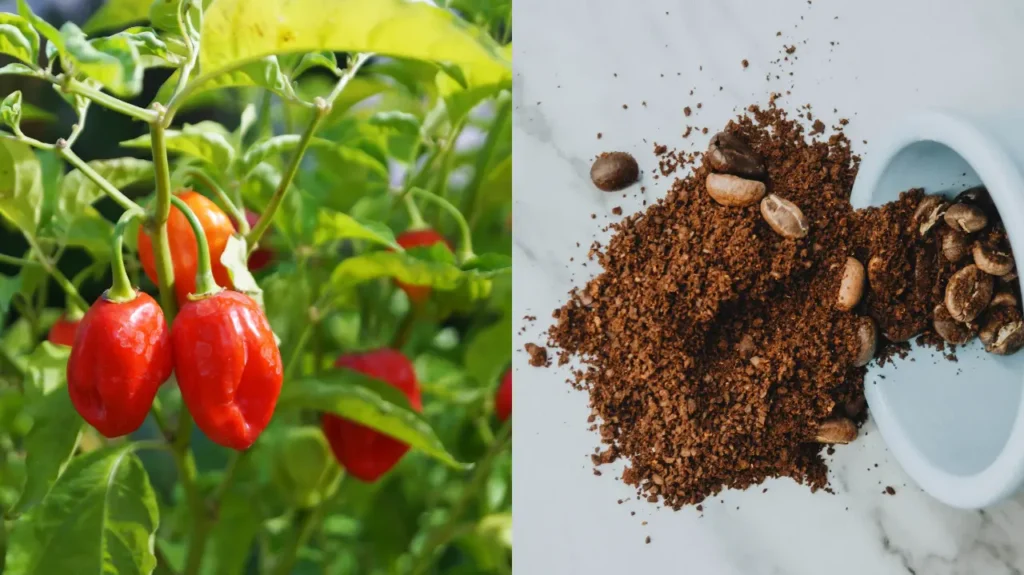You’ve been sprinkling coffee grounds around your garden like confetti. Free plant food. But your roses droop like overcooked noodles.
Your basil’s as pale as day-old espresso. That fancy French lavender? More like a crispy brown tumbleweed.
Here’s the wake-up call: your daily coffee habit plots against your garden.
Yes, coffee grounds work miracles for some plants. For others? It’s like pouring acid on their roots. The same caffeine and acids that fuel your mornings?
They’re choking your plants’ roots, starving blooms, and turning Soil into a toxic swamp.
Plants can’t yell “STOP!” but their dying leaves are screaming it. The caffeine in coffee beans is particularly harsh on many plants.
I’ve seen gardens collapse from well-meaning coffee ground overload. Let’s crack exactly what plants don’t like coffee grounds, your garden’s survival guide.
Twenty-seven plants are gasping for help. Save them before your compost bin becomes a crime scene.
Signs Your Plants Don’t Like Coffee Grounds
Your plants are sending SOS signals; ignore them, and you’ll be hosting a garden funeral by summer’s end. Coffee ground damage creeps in fast.
One day, your rosemary’s thriving; the next, it’s shedding leaves like a stressed-out barista during rush hour.
Visual Indicators
Your plants are flashing neon warning signs; no microscope is needed. Coffee ground damage paints itself across leaves in vivid, unmissable hues.
Miss these visuals, and you’ll miss the chance to save your greens.
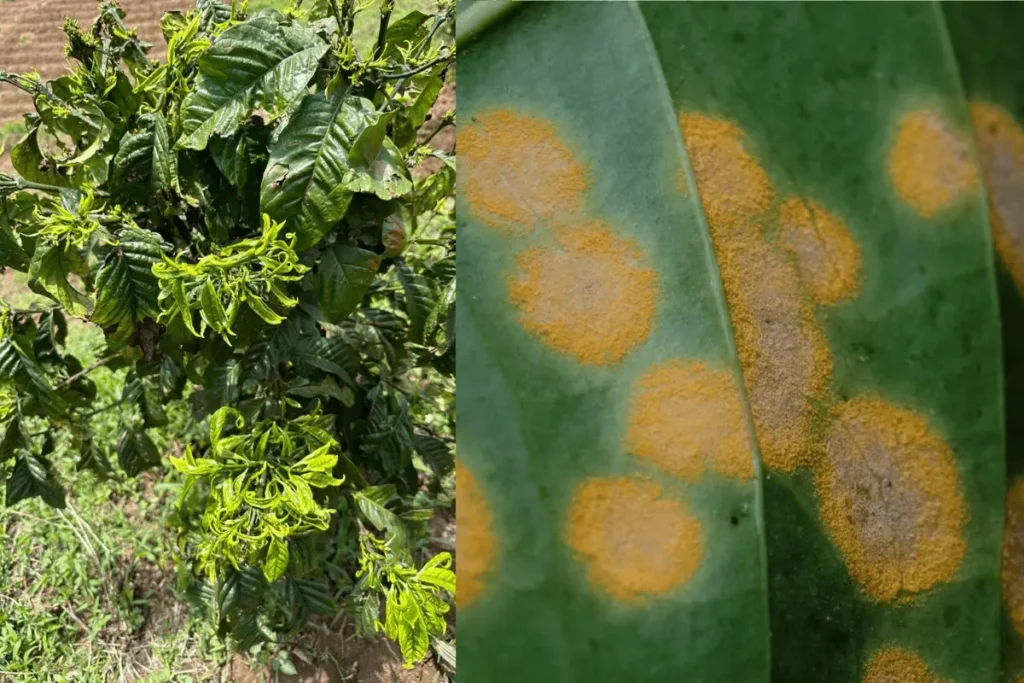
Yellow Edges = Silent Screams
Leaves yellowing from the edges inward? That’s not natural aging; it’s a nutrient heist. Coffee’s acidity binds to iron and magnesium, starving plants of vital minerals.
Like serving decaf to a caffeine addict, the plant weakens slowly.
Wilting With Wet Soil?
If leaves droop like limp lettuce despite moist dirt, roots are suffocating. Coffee grounds clump when wet, creating an airless concrete around roots
It’s the plant equivalent of waterboarding; they literally can’t breathe.
Burnt Tips Tell Tales
Are leaf tips crispier than over-roasted beans? That’s salt buildup from decomposing grounds burning tender tissues. Is new growth curling like stale coffee filters?
Soil’s too acidic for young roots to function.
Baby Leaves, Big Problems
Deformed new leaves are the smoking gun. Coffee’s caffeine stunts cell division; think of it as putting a plant in caffeine handcuffs.
If mature leaves fall prematurely, the plant ditches ballast to survive its toxic Soil.
Ghostly Pale Leaves
Leaches fading to washed-out green? Chlorophyll breaks down from pH shock. It’s like draining the color from a perfect latte; vibrancy vanishes when coffee’s acidity hijacks the Soil.
Pro Tip: Do the dawn check. Examine leaves at sunrise when plants are most hydrated. Wilted morning leaves + coffee grounds = root crisis. Plump leaves that droop by afternoon? Different issue.
Soil Changes
Coffee grounds don’t just feed plants; they transform your Soil into a crime scene. Miss these underground clues, and you’ll dig up corpses instead of blooms.

Crusty Soil = Roots in Handcuffs
Roots can’t push through if your Soil’s surface hardens like a week-old espresso puck.
Coffee grounds glue soil particles when dry, creating a barrier more formidable than a café’s morning rush line. Roots suffocate silently below.
Slimy Patches Spell Rot
Dark, greasy spots in the dirt?
That’s not rich earth; it’s anaerobic decay. Excess grounds trap water, inviting bacteria that eat roots instead of nutrients.
Your plant’s foundation is melting.
Mold’s Coffee Party
White fuzz on Soil isn’t harmless. It’s a fungal rave fueled by coffee’s nitrogen.
These molds steal oxygen and release toxins, a double shot of destruction for seedlings and mature plants alike.
Stale Coffee Stench Lingers
Healthy Soil smells earthy. Microbial balance is wrecked if your garden reeks like a dumpster behind a coffee shop.
Grounds are rotting instead of decomposing, a sure sign they’re poisoning the ground.
Water Lazing on the Surface
Puddles that won’t drain? Coffee grounds act like a barista’s clogged portafilter. Fine particles fill soil gaps, creating a waterlogged hell where roots drown.
Say goodbye to drought-tolerant herbs.
Growth Issues
Your plants aren’t just struggling; they’re staging a silent rebellion. Coffee grounds don’t whisper warnings; they sabotage growth in ways that leave gardens gasping.

Blooms Gone AWOL
Roses with no flowers? Hydrangeas all leaves? Coffee’s nitrogen overdose forces plants into leafy overdrive.
It’s like feeding athletes pure sugar, energy spikes, and then crashes. Blooms get sacrificed for survival.
Seeds Refusing Life
If starters won’t sprout, caffeine’s the killer. Coffee grounds release natural herbicides as they decompose.
Your carrot seeds?
They’re getting weed-whacked before they even peek through.
Growth Hits a Wall
Plants stuck at knee height? Caffeine inhibits cell division, like putting a parking brake on growth engines.
Are new shoots dying back?
Roots are too busy fighting rot to fuel upward moves.
Stems Tell Weakness Tales
Leggy stems stretching like overworked espresso machines? Plants search for light when roots fail.
Smaller leaves signal desperate rationing; your greens are in survival mode, not thriving.
Fruit Fiasco
Are tomatoes staying marble-sized? Squash aborting fruits? Coffee’s fake nitrogen feast tricks plants into hoarding resources.
Fruits become afterthoughts when leaves demand all the energy.
Root Rot’s Dirty Work
Dig carefully. The damage is critical if roots smell like a swamp and crumble like wet coffee filters.
Rot spreads faster than spilled latte; one sick root dooms the whole plant.
Pro Tip: Do the tug test. Gently pull a plant’s base. Coffee grounds have destroyed the anchor system if it lifts easily with mushy roots. Time for emergency repotting.
Growth issues are the final scream before collapse. When you notice stunted stems, the roots may be 80% gone. Coffee grounds work fast, faster than most gardeners realize.
Categories of Plants to Avoid
If you are well aware of your plants’ three major problems, you can save many plants. But exactly what plants don’t like coffee grounds?
We have contacted some plant pathologists for coffee and garden lovers so we can give you the best suggestions.
Alkaline-Loving Plants
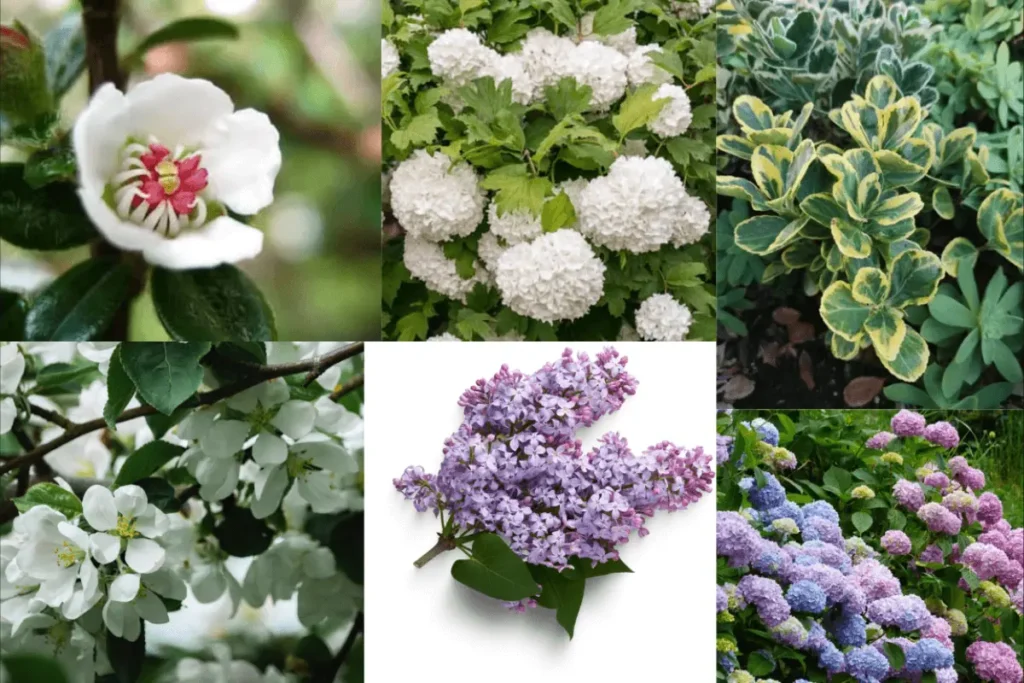
Alkaline-loving plants and coffee grounds mix like oil and water, a disaster dressed as good intentions.
These species evolved in mineral-rich, dry soils; coffee’s acidity and moisture trap? Their kryptonite.
Mediterranean Herbs Fight for Life
Lavender’s silver leaves are yellow within days in coffee-treated Soil. Its deep roots, built for limestone terrains, choke in acidic sogginess.
Rosemary and thyme? Their delicate surface roots rot faster than forgotten cold brew.
Sage’s sprawling root system, usually drought-resilient, suffocates, triggering total collapse.
Blooms That Despise Java
Roses-fed coffee grounds become leafy zombies, all foliage, no flowers. Phosphorus locks up tighter than a café safe, starving blooms.
Chrysanthemums are yellow like old newspapers; their famous fall colors never emerge. Lilacs skip entire blooming seasons, needing years to reset soil chemistry.
Carnation stems grow as weak as stale biscotti, snapping under petal weight.
Trees That Can’t Handle the Buzz
Arborvitae needles are brown at the tips within weeks, a pH shock reaction. Lindens yellow catastrophically, their iron uptake strangled by acidity.
Red Chestnuts grow slower than a decaf pour-over as hormones misfire. Ironwoods? Their anchor roots soften like over-steeped tea leaves, risking total toppling in storms.
Caffeine-Sensitive Plants

Caffeine-sensitive plants react to coffee grounds like toddlers to decaf coffee, causing total system overload.
These species didn’t evolve with caffeine in their diet, and the consequences are brutal.
Ornamentals Throwing Tantrums
Geraniums curl leaves like crumpled coffee filters within 48 hours, and their cells shrink from caffeine’s toxicity.
Asparagus Fern’s delicate fronds turn brittle as stale biscotti, snapping at the slightest touch. Chinese Mustard?
It stalls at the seedling stage, roots paralyzed by caffeine’s growth inhibitors. Even hydrangeas betray you; blooms shift colors erratically as coffee’s acidity warps aluminum uptake.
Vegetables in Crisis
Asparagus crowns drown in their beds. Coffee’s nitrogen turbocharges fern growth but rots the edible crown, a cruel bait-and-switch.
Italian Ryegrass seeds refuse life; caffeine acts like a pre-emergent herbicide. Clover seedlings die mid-sprout, their tiny roots scorched by acidic grounds.
Fungus-Prone Plants
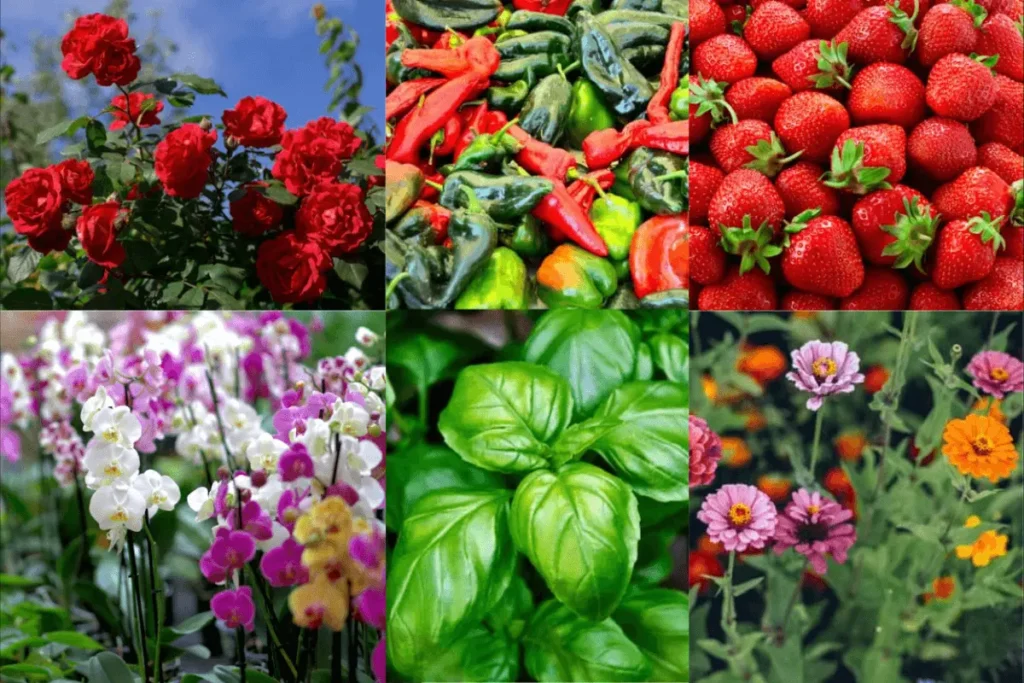
Fungus-prone plants and coffee grounds are a horror story waiting to happen.
These species need desert-dry roots or surgical sterility; coffee delivers swampy chaos instead.
Roots Under Siege
Garlic bulbs rot faster than forgotten cold brew in damp coffee-enriched Soil. Lemon trees’ delicate root hairs become fungus buffets, and their citrusy oils are no match for coffee’s moisture trap.
Squash stems melt into slime collars overnight when grounds come in contact with Soil. Baby pepper seedlings?
They damp off like overwatered coffee filters, stems pinched by fungal nooses.
Dry-Lovers Drowning
Are succulents plump with stored water? Coffee grounds turn their cells to mush, like freezing a cactus latte.
Cacti roots rot stealthily underground, only revealing death when the plant topples. Orchid crowns decay faster than iced coffee in the sun, spreading black death leaf by leaf.
Air plants? Their delicate trichomes clog with coffee particles, suffocating them in humid decay.
Quick Reference Table: Plants That Don’t Like Coffee Grounds
| Category | Plant Type | Toxicity Level | Recovery Time | Cost Impact |
|---|---|---|---|---|
| Mediterranean Herbs | Lavender | Critical | 3-6 months | $15-20 |
| Rosemary | High | 2-3 months | $20-25 | |
| Thyme | Medium | 2 months | $10-15 | |
| Sage | Medium-High | 3-4 months | $12-18 | |
| Flowering Plants | Roses | High | 1-2 seasons | $50-100 |
| Chrysanthemums | Medium-High | 1 season | $15-30 | |
| Lilacs | High | 2 seasons | $40-80 | |
| Carnations | Medium | 3-4 months | $20-35 | |
| Trees | Arborvitae | Medium | 2-3 years | $300-1,000 |
| Linden | High | 2-3 years | $400-800 | |
| Red Chestnut | Medium | 2 years | $500-1,200 | |
| Ironwood | Medium-High | 2-3 years | $200-600 |
Additional Sensitive Plant Categories
Your garden’s most vulnerable players face coffee ground threats you’d never suspect.
These categories hide silent killers, plants that look tough but fold fast under Java pressure.
Baby Plants
Newborn seedlings, tomatoes, zinnias, and basil are caffeine’s easiest targets. Their thread-like roots burn on contact with acidic grounds.
You’ll see cotyledons yellowing like expired creamer within days. Catch it early? They might rebound in 2-4 weeks if you report fast.
Bulb Bombs Waiting to Blow
Tulips, daffodils, and iris bulbs rot silently in coffee-enriched beds. Their stored energy drains fighting acidity instead of fueling blooms.
Even if you remove grounds immediately, expect a full growing season of stunted flowers before recovery.
Tropical Treasures Turning Tragic
Monstera’s split leaves are brown at the edges. Bird of Paradise stalks lean like drunken baristas.
These jungle natives need airy roots; coffee’s moisture invites mold that chokes them slowly. Revival takes 3-6 months of surgical soil rehab.
Desert Dwellers Drowning
Cacti, aloe, and agave, built for the parched earth, suffer the most. Coffee grounds trap the humidity around roots like steamed milk foam.
When pads wrinkle or tips blacken, internal rot is already fatal. Recovery? A year-long dry-out marathon… if they survive.
Plant Coffee Ground Toxicity Guide
Coffee ground toxicity doesn’t play fair; it brutally targets your garden’s most valuable players. Know these risks unless you enjoy burning money and time.
Zone-Specific Time Bombs
Mediterranean herbs (Zones 5-9) face spring ambushes. New growth emerges just as coffee’s acidity peaks, like opening a café during a power outage.
Flowering plants (Zones 4-8) suffer during bloom surges; roses waste energy fighting pH wars instead of making petals.
Trees (Zones 3-7) get sucker-punched in early growth spurts, their xylem clogged like espresso machines with scale.
Financial Bleeding No One Talks About
A 12 rosemary plant? Its death drags down the whole herb squad, a $75+ loss. Centerpiece roses collapse like insufficient stock, costing $100+ per plant.
Lose a mature Japanese maple? You’re out $1,500 plus years of shade, the horticultural equivalent of torching a Nespresso machine.
Recovery Isn’t Instant Coffee
Catch herb damage early? 2-3 weeks of ICU care might save them. Flowers need 3-6 months of pH rehab, like retraining a barista after a milk-steaming disaster.
Trees?
They’ll sulk for 2-3 years, vulnerable to pests and weather. A half-dead oak costs more than replacing your espresso setup.
Better Uses for Your Coffee Grounds
There you have it; what plants don’t like coffee grounds? But what if you don’t want to waste your coffee grounds but still have the mentioned plants in your garden?
Don’t worry! We are here to help you. We have detailed how you can use your coffee grounds. You can follow the below steps to use your coffee grounds without disturbing any plants.
Composting Success
Composting coffee grounds isn’t recycling; it’s alchemy. Done right, you turn waste into garden gold. Screw it up? You’re brewing toxic sludge that’ll nuke your plants.
The 20:80 Rule Isn’t a Suggestion.
Twenty percent coffee grounds max. Cross that line, and your pile turns into a stinking methane factory.
Balance each espresso shot’s worth of grounds with four parts: brown stuff, dry leaves, shredded tax bills, and even pizza boxes.
Think of it as a flat white: too much milk drowns the coffee.
Layer Like a Barista Layers Art
Alternate grounds with browns like latte stripes. Coffee layer, leaves layer, repeat. This lets oxygen flow like steam through milk, preventing clumpy disasters that rot instead of decompose.
Anaerobic pockets smell worse than burnt beans and kill helpful microbes.
The Squeeze Test Never Lies
Grab a handful. If water streams out like over-extracted espresso, add more leaves. Perfect compost holds moisture like a damp portafilter puck, hydrated but breathable.
Get this right, and your pile heats faster than a fresh roast.
Pro Tip: Sniff weekly. Healthy coffee compost smells earthy, like a forest after rain. If it reeks of vinegar or ammonia, you’ve got a nitrogen overdose; toss in cardboard shreds ASAP.
Properly composted grounds lose their acidity, becoming safe for most plants. But skip a step, and you’ll spread concentrated toxins.
Plants That Love Coffee Grounds
While half your garden flees from coffee grounds, these rebels chug it like Vietnamese coffee martinis. They’re not just tolerant; they demand their Java fix.
Blueberries: The Caffeine Addicts
These bushes guzzle acidic grounds like iced lattes in July. Their surface roots hoard nitrogen and acidity, pumping out berries 30% plumper.
Want a bumper crop? Sprinkle used grounds monthly like chocolate shavings on a mocha.
Azaleas: Blooming Divas
Treat azaleas to spring coffee mulches, and they’ll reward you with blooms so lush they’d shame wedding bouquets.
Their shallow roots absorb caffeine like VIPs at an open bar, transforming scrawny shrubs into floral rockstars.
Hydrangeas’ Color Magic
Here’s the kicker: coffee grounds hack hydrangea DNA. The acid helps them suck aluminum from the Soil, turning pink blooms electric blue.
It’s like giving flowers a pH remote control; you decide the color show.
Pine Trees: Needle Ninjas
Scatter grounds under pines and watch old needles cling like baristas to morning espresso. The extra acidity mimics their native forest floor, boosting growth hormones you can’t buy in stores.
Root Veggie Sweetness Hack
Carrots and radishes get candy-sweet when the grounds are timed right. Apply during the root swell phase, like salting fries mid-cook.
The nitrogen surge converts starches to sugars, creating veggie dessert underground.
Pro Tip: Brew ground tea for potted plants. Steep ½ cup of used grounds in 1 gallon of water for 24 hours. Strain. It’s the equivalent of a plant cold brew, with all benefits and no sludge.
Smart Alternative Uses
Your coffee grounds aren’t just plant food but Swiss Army knives for garden survival. These tricks turn waste into warfare against pests, rust, and waste.
Slug-Proof Fortresses
Mix grounds with crushed eggshells; it’s barbed wire for mollusks. Slugs recoil from the gritty caffeine double-punch.
Bonus: Eggshell calcium seeps into the Soil with each rain, strengthening plant cell walls naturally. Reapply every monsoon season.
Cat-Repelling Citrus Grenades
Are neighborhood cats treating your beds like litter boxes? Bury coffee grounds + orange peels 2 inches deep.
The combo smells like predator urine to felines. Safe for pets, brutal for trespassers. Refresh weekly or after heavy rains.
Worm Bin Turbochargers
Worms go wild for coffee like office workers at 3 PM. Add a handful weekly to boost breeding. The grit grinds their food (eggshells love this).
But overdo it, and you’ll cook worms in acidic heat; stick to 10% of bin volume.
Rust-Busting Tool Scrub
Mix the grounds with coconut oil to make a paste. Scrub shovel blades and shears; the abrasives strip rust without toxins.
The oil leaves a protective sheen, like hand cream for metal. Perfect for pruners exposed to plant sap.
Acid-Lover’s Cold Brew
Steep 1 cup of ground in 1 gallon of water for 24 hours. Strain through old t-shirts (filters clog). Dilute to iced tea color.
Drench azaleas, hydrangeas, or blueberries at dawn; roots drink it fastest when cool. One batch fuels 20 pots for a week.
FAQs
Coffee grounds can be Garden Gold or Grim Reaper; here’s how to stay on the right side.
Can coffee grounds kill plants?
Absolutely. Dump too many, and you’ll cook roots in acidic sludge while starving them of nutrients. Alkaline lovers like lavender die faster, but their roots can’t handle pH swings. Just like black coffee can affect your teeth, it can damage sensitive plants.
How do I spot coffee overdose?
Yellow leaves screaming for help. Mushy stems waving white flags. Mold is partying on Soil like it’s New Year’s Eve. See these? Stop. Now.
How long until my Soil recovers?
3-6 months of sobriety. Sandy soils bounce back faster, like espresso metabolizing. Clay? It clings to coffee’s toxins like a caffeine addict to morning brew.
Composting ratio non-negotiable:
20% grounds max. More, and your pile becomes a stinking science experiment. Balance with dead leaves like you’d mix milk in coffee; too much ruins everything.
Indoor plant rules:
Only acid-heads like African violets get occasional grounds. One tablespoon per cup of Soil; think of sprinkling brown sugar on a latte.
Fresh vs. used grounds?
Used. Fresh grounds are acidic landmines. Brewing tames them like light roast and dark roast processes tame bitter beans.
When to apply?
Monthly for coffee-craving plants. Spring and fall only, like seasonal coffee shop menus. Summer heat amplifies risks.
Mixing with fertilizers?
Do it, but halve other nitrogen sources. Coffee’s nitrogen is slow-release, like cold brew’s caffeine kick.
Expert Tips
Your coffee grounds need tougher love than a barista’s morning espresso ritual. Plant pathologists spilled these beans; ignore them at your garden’s peril.
Fresh Grounds = Plant Poison
Raw coffee grounds pack more acid than lemon juice and enough caffeine to kill seedlings. Always age them for 48+ hours and spread them on a baking sheet to dry.
If Soil smells like a Starbucks, you’ve screwed up.
Mix Like a Mad Scientist
1 part grounds to 4 parts soil isn’t a suggestion; it’s law. Use a garden fork to blend until it looks like chocolate cake crumbs.
Clumps create drainage nightmares worse than a clogged espresso machine.
Journal Like Your Plants’ Therapist
Date every application. Note leaf colors, bloom counts, and even stem thickness. Spot yellowing on day 3? You’ve got a pH criminal. Patterns emerge faster than latte art.
pH Meters Are Non-Negotiable
A 30-meter beats 300 in dead plants. Test every 90 days; coffee’s effects linger like stale roast odors. Chart results monthly; if the graph looks like a stock market crash, stop grounds immediately.
Silent Killer Alert
Used grounds still hold 0.5% caffeine, enough to stunt carrots and parsley. Even coffee pods contain residual caffeine when used. Rinse them in a colander if reusing for sensitive plants. Yes, it’s extra work. No, your hydrangeas won’t die.
Yes, it’s extra work. No, your hydrangeas won’t die.
Emergency Flush Protocol
Overdosed plants need a detox. Drench soil with 3x pot volume in water; think of an espresso machine backflush.
Follow with crushed eggshells to neutralize the acid.
Conclusion
Your coffee habit could make or break your garden. While grounds boost acid-loving blueberries and hydrangeas, they’re toxic to lavender, rosemary, and others craving alkaline Soil.
The secret? Know exactly what plants don’t like coffee grounds before you sprinkle. Test your Soil’s pH, compost used grounds to soften their bite and always start small.
True gardening wisdom isn’t just recycling coffee pods; it’s reading your plants’ needs like a perfectly pulled espresso shot.
Choose wisely, and watch your garden thrive one informed scoop at a time.



